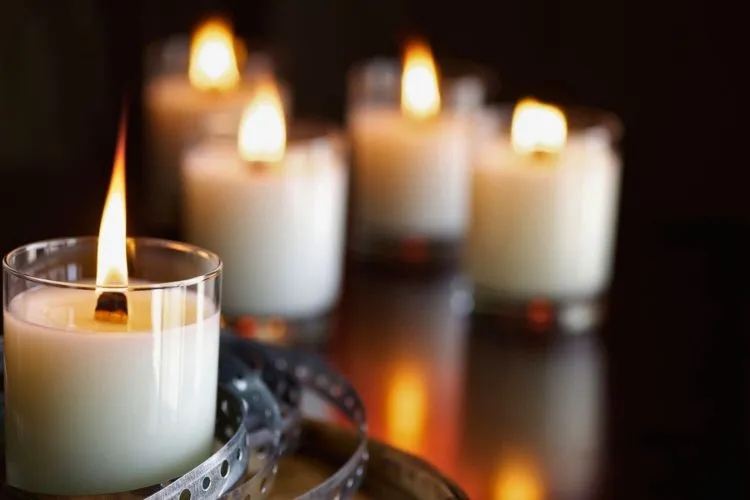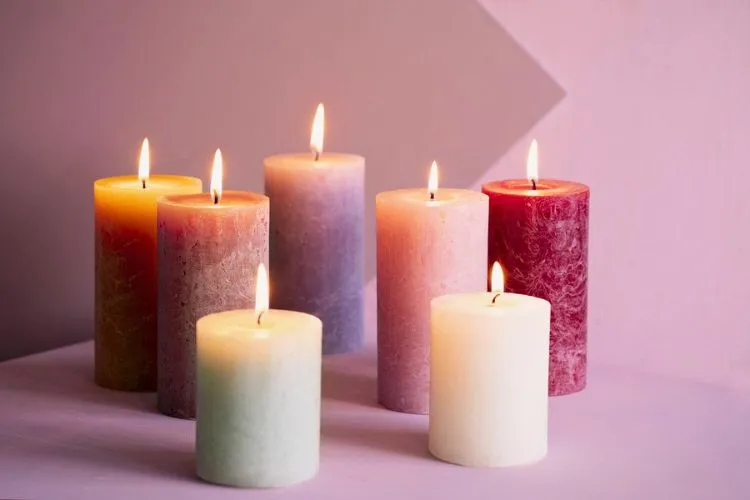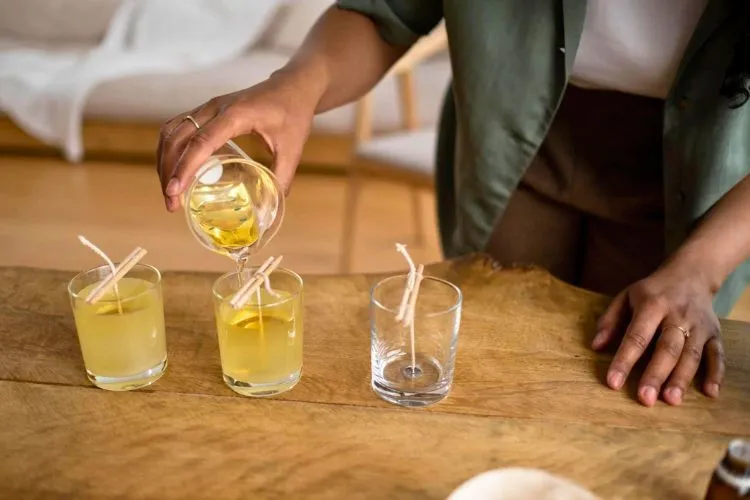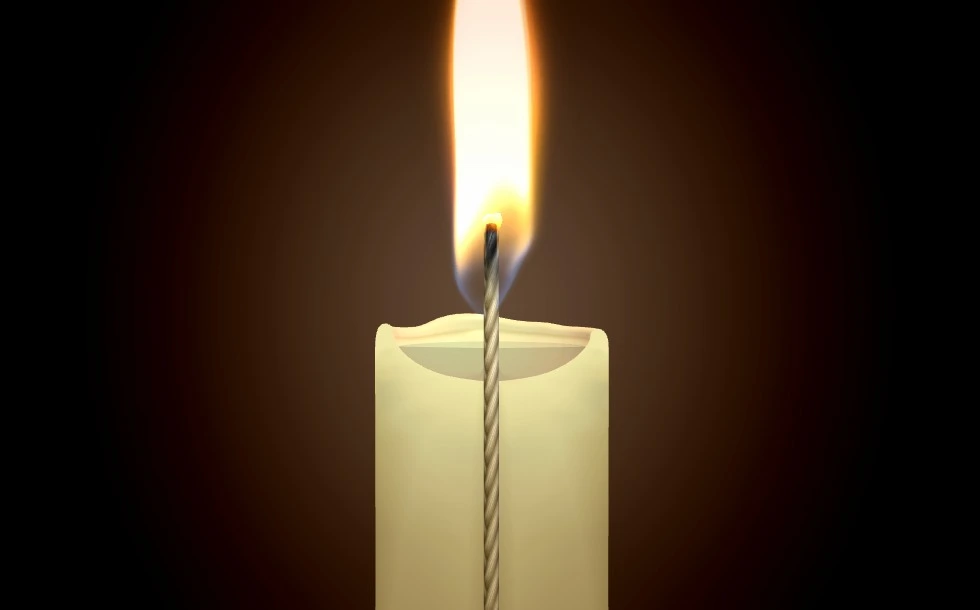Can a candle boil water? It will be interesting to know if a candle, which is a basic source of light and warmth, can generate enough heat to perform this task.
This question prompts an exploration into the science of heat energy and the efficiency of candles as a heat source.

This article will examine the conditions under which a candle might perform this task, providing an understanding of the energy output of a candle flame and the practicality of boiling water in this unconventional way.
Can A Candle Boil Water?
Yes, a candle can boil water given the right conditions. Generally, a candle flame has a temperature of around 1000°C, which is much more than the boiling point of water at 100°C. However, due to energy losses to the environment, it will not be an efficient process.
One method would involve setting up a system where you can concentrate the heat generated by a candle towards a small container of water. Using a heat-resistant container, like a metal cup, placed at a distance of about 1 cm above the flame, could achieve this. The process would be slow and might require multiple candles to expedite it.
It’s crucial to note that while this experiment illustrates basic principles of heat transfer and energy conversion, it’s not a practical approach for heating or boiling water for normal daily requirements.
Efficiency of Different Candle Types
The efficiency of a candle in terms of its heat output and boiling capability can be significantly influenced by factors such as its size, material, and the number of wicks it has.
Each of these elements plays a critical role in determining how effectively a candle can transfer heat to water and potentially bring it to a boil.

Candle Size
Larger candles generally have a greater mass of wax available for combustion over time, potentially offering a more sustained and consistent heat output. The increased surface area can also enhance the burning efficiency, making it possible to generate more heat.
However, the actual increase in heat might not be directly proportional to the size increase due to inefficiencies in heat transfer and the larger surface area losing heat to the surroundings.
Candle Material
Candles are typically made from paraffin, beeswax, or soy, each with distinct combustion properties that impact their efficiency.
- Paraffin Wax: Made from petroleum, paraffin wax is widely used due to its affordability. It burns hot, making it theoretically effective for heating purposes. However, it may also burn more quickly than alternatives, diminishing its efficiency over time.
- Beeswax: Known for burning cleaner and with less soot than paraffin, beeswax candles burn slower and at a slightly lower temperature. This longer burn time can make beeswax candles more efficient for prolonged heating, despite the potentially lower immediate heat output.
- Soy Wax: Soy candles burn cleanly and at a lower temperature than paraffin but typically offer a longer burn time, similar to beeswax. Their eco-friendly nature and consistent burn make them a practical choice for extended use, although their heat output might be less intense for boiling purposes.
Number of Wicks
The number of wicks in a candle can also affect its heat output. Multiple wicks introduce more flames, which can significantly increase the heat generated by a single candle. This arrangement allows for a broader distribution of heat, potentially heating a container of water more uniformly and efficiently.

However, the increased rate of wax consumption might reduce the overall burn time, necessitating a balance between the number of wicks and the desired burning duration.
Practical Considerations for Boiling Water
Although these factors influence a candle’s heat output, the practicality of using candles to boil water remains limited by energy transfer inefficiencies and safety concerns.
To optimize heat transfer to water, focusing on a configuration that minimizes heat loss to the surroundings and effectively concentrates the heat towards the water container is essential. While certain candle characteristics can influence their efficiency in heating and potentially boiling water, the practical application of candles for this purpose is largely inefficient and impractical for everyday use.
The size, material, and number of wicks play crucial roles in a candle’s heat output, but factors such as heat transfer efficiency, safety, and environmental impact should also be considered when evaluating the feasibility of boiling water with candles.
Thermodynamics of a Candle Flame
The thermodynamics of a candle flame involves the study of heat, temperature, and energy conversion processes. A candle flame can be broadly divided into several zones, each with different temperature profiles, which together influence the flame’s ability to transfer heat and potentially boil water.

Zones of a Candle Flame
- Non-Luminous Outer Zone: This is the hottest part of the flame, where complete combustion occurs due to the ample oxygen supply from the air. Temperatures can reach up to 1400°C (2550°F). This zone is best suited for transferring heat to another object, like a pot of water.
- Bright Luminous Zone: Just beneath the outer zone is a layer of partial combustion where the temperature is around 1000°C (1832°F). This area emits bright light because carbon particles get heated up to the point of incandescence.
- Dark Inner Zone: Closest to the wick, this region is where wax vaporization occurs and is the coolest part of the flame, with temperatures ranging from 800°C to 900°C (1472°F to 1652°F). Here, the wax that gets drawn up the wick by capillary action is turned into a hot gas.
- Blue Base: The very base of the flame, where it meets the wick, has a blue hue due to the presence of carbon and hydrogen radicals that react with oxygen to initiate the combustion process. Temperatures here may also be quite high, but due to the configuration of the wick and candle, it’s often not the primary area for heat transfer to boil water.
Heat Transfer and the Ability to Boil Water
The efficiency of the candle in boiling water is highly dependent on how the heat from these various zones is transferred to the vessel containing water. Here are the mechanisms involved:
- Conduction: At the point where the flame makes contact with the bottom of the pot or kettle, heat is directly transferred by conduction. The material of the vessel must be a good thermal conductor to distribute this heat effectively to the water.
- Convection: The hot gases generated by the flame rise and can heat the sides of the vessel as they move upward. Good vessel geometry can harness this convecting heat to warm more of the water’s mass, increasing efficiency.
- Radiation: Heat is also radiated from all parts of the flame, but especially from the bright luminous zone. A polished, reflective surface on the vessel can help focus this radiant heat back onto the pot and into the water.
Limitations and Efficiency
The inherently small size of a candle flame and the large surface area of a vessel needed to boil water mean that much of the heat is dissipated into the surroundings before it can effectively heat the water. For a candle to boil water, the setup must minimize heat loss, potentially by using windscreens or other focusing devices to concentrate the heat on the vessel.
Moreover, the temperature required to bring water to a boil—100°C (212°F)—must be maintained throughout the water mass until it reaches the point of boiling. Given a candle’s flame’s limited size and heat output, this is a slow process; multiple candles might be required to produce enough heat within a reasonable time frame.
While the temperature within a candle flame is more than sufficient to boil water, the efficiency of this process is greatly reduced by the small flame size and the difficulty of transferring enough of that heat into the water while minimizing losses.
Understanding the thermodynamics of a candle flame can help optimize conditions, but practical limitations often make this an educational demonstration rather than a viable heating method.
Conclusion:
While a candle flame theoretically possesses the requisite heat to boil water, practical application reveals significant inefficiencies. Challenges such as sustaining a high enough temperature, optimizing heat transfer, and minimizing heat loss to the environment drastically reduce the feasibility of using a candle to boil water effectively.
Though educational as a demonstration of heat transfer principles, relying solely on candles for boiling water proves impractical for everyday uses, underscoring the importance of more efficient heating methods.


